 Your Comics, alive
Your Comics, alive

Turn your iPad into the most exciting device for reading comics. Try the Graphic Novel "Helga Deen" and experience a comic book in a whole new way.
App Store Watch the App TRailer
Watch the App TRailer
Recommend “Helga Deen” to a friend.
Living Comic System® is a registered format and trademark.For further information please contact us.
 A new layput in Comics
A new layput in Comics

The Living Comics System™ , enriches artworks with visual effects that offer the reader amazing depth, a sense of movement, atmospheric elements and lights. Living Comics System emphasizes the comic experience as never before. It is a whole new standard in comics.

"Helga Deen, the Last Night", is a 32-page graphic novel based on a true story, created and directed by the international award-winning director Dario Picciau and writer Roberto Malini.
The Holocaust is an extreme event in human history. The wave of death that Nazism brought with it swept away millions of innocent lives.
Helga Deen was a young Jewish girl of 18 who was deported to the transit camp of Vught and then sent on to the Sobibor camp where there was no possibility of survival. She knew she was about to die, yet she expressed her pain as the children were transported to Auschwitz and Sobibor, she considered herself a mother to all the Jewish children:
![]() It is too much. I feel a wreck and tomorrow it will happen again. But if my will-power dies, then I too will die. And this is something that must never be forgotten.”
It is too much. I feel a wreck and tomorrow it will happen again. But if my will-power dies, then I too will die. And this is something that must never be forgotten.”
– Helga Deen
Created with a team of over 40 artists and the most up to date visual 2D/3D technologies,
the story in the graphic novel begins on a midsummer night in the Nazi Vught Transit Camp. The rain falls like tears. The headlamps of the vehicles belonging to the SS light up like soulless eyes...
The Holocaust shattered humanity and civilization itself. This Graphic Novel relates one of these shards of horror, a sequence of moments taken from millions of individual stories, fragments of Helga's last night in the Vught Camp.
![]() We decided to dedicate a graphic novel to Helga Deen for the symbolic and educational value of her story, the story of her last night at Vught, when the german soldiers pulled hundreds of children from the sheds and sent them, in livestock wagons, to the gas chambers in Poland.
We decided to dedicate a graphic novel to Helga Deen for the symbolic and educational value of her story, the story of her last night at Vught, when the german soldiers pulled hundreds of children from the sheds and sent them, in livestock wagons, to the gas chambers in Poland.
Helga Deen, like Anne Frank, has become a symbol of the Jewish girls and women of the Holocaust who in many cases sacrificed their own lives to ease the suffering of the most vulnerable people in the death camps.
Helga's story is a part of Humane Society's
Heritage and today, more than ever, in a constantly changing world in which human values are being lost, it is important to remember it, in order to understand our present and to contribute to building a just and better future for the next generations".
– Dario Picciau, Director



With the Living Comic System®, just tap on any image to bring it to life, it's amazing.

Touch by touch, page after page, activate images and texts that make up the story.
32 High Definition pages created by artist Dario Picciau and writer Roberto Malini

Enjoy the new Zoom Balloon feature. Tap on top of any text in the app to zoom in!

Now with "live" help at first launch, Icons will show you how to access the main features.

99 stunning artworks animated with "Living Comic System™ technology"

Immerse yourself in the story with music and sound effects

Available in English and Italian. Soon in French, German, Spanish and Russian
UI entirely
gesture-controlled

Swipe left
to right or
right to left
to turn pages

Swipe with two fingers
to jump to
the cover
 Swipe up
Swipe up and down
to adjust the volume

Tap twice anywhere
to reveal the
page index

Helga Deen is the authoress of a diary, which is preserved today in the Regional Archive of Tilburg (Holland).
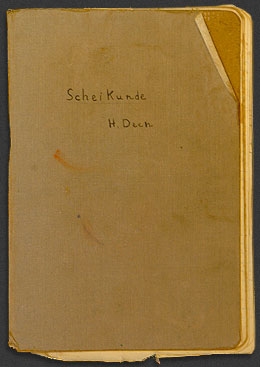
Front cover of Helga Deen’s Diary
She was in the final year of senior school in Tilburg when she and her family were arrested and deported to Vught on April 1st, 1943. She was placed in Barracks 34B.
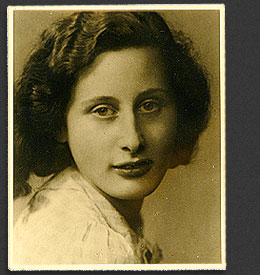
Helga Deen
She began writing her diary in secret, and it comes to an end on July 2nd, 1943, shortly before she was deported to Sobibor, where she was killed.
She wrote because she'd promised her beloved that she would record her experiences and try to write to him as often as she could.
31,000 people, half of them Jewish, were locked up in Vught between January 1943 and September 1944.
June 7th, the children aged between 4 and 16 left with their mothers or fathers. In total, 1,269 children and young Jews were transferred from Vught to Westerbork and
then immediately to Sobibor, where they were killed soon after their arrival. Helga described the transfer of the children and the inhumanity of their executioners.
![]()
When the Germans invaded Poland in 1939, many men left the country to avoid deportation and the gas chambers.
The girls and women who were jobless, and the mothers of small children were the first victims of the round-ups when the deportations began. The women in the ghettoes could have abandoned their younger siblings and small children in an attempt to save their own lives, but they very rarely did so, preferring to face the deportations to the death camps: Auschwitz, Majdanek, Sobibor, Treblinka, Belzec, Chelmno.
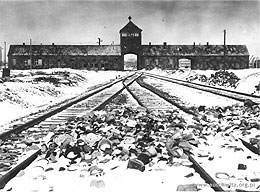
Entrance to Auschwitz II Birkenau
The Jewish women knew how to live off a few breadcrumbs and ration out the small amounts of food they were able to get hold of to feed their loved ones.
Whenever possible, the Jewish mothers entrusted their children to Aryan families. And yet, in spite of their strong will and their desperate desire to survive, 3 million little girls, teenagers and women of all ages were unable to escape their fate in the death camps.
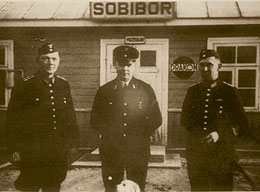
The station at Sobibor
Hit by a bullet or a rifle butt, poisoned by gas, eaten away by hunger and sickness, they did not survive the
most relentless and cruel persecution.
Some of them rebelled against the Nazis and joined the Resistance in Warsaw or Vilna, in the woods of Lithuania or Belorussia. Some Jewish women took up arms; most of them cooked, washed and darned clothes, helping the Partisans in every way.
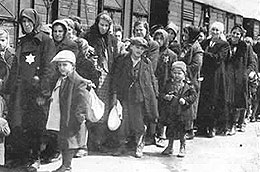
Women and children during the HolocaustWhen they were arrested and deported, the woman faced a terrible and humiliating reality. Their bodies and will were broken, they were shaved, ill-treated, reduced to skin and bones. Crammed in the sheds, they tried to survive in the worst sanitary conditions, tormented by parasites and disease.
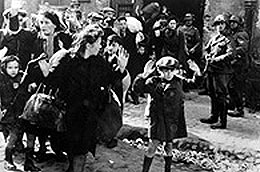
German soldiers pointing guns at women and children during the liquidation of the Warsaw ghetto on 16th May , 1943.
To escape death in the gas chambers, they worked, as long as their strength held out, in the textile and weapons factories, on farms and building sites. Their mortality rate was very high and it worsened as the years went by.
But no description can convey the fate of the girls and women of the Shoah, nor the strength of will the survivors showed when they decided to tell their story. “During the long months I spent in the concentration camp, I often thought we would never again be capable of feeling normal emotions”, wrote Goti Bauer, “that we would never again be able to weep over a natural death, we would never again suffer for something, no matter how serious, that there was a remedy for. But fortunately that did not happen: miraculously, with great difficulty, we ‘Häftlinge’, we ‘nobodies’, were able to claim back our dignity and human sentiments”.













